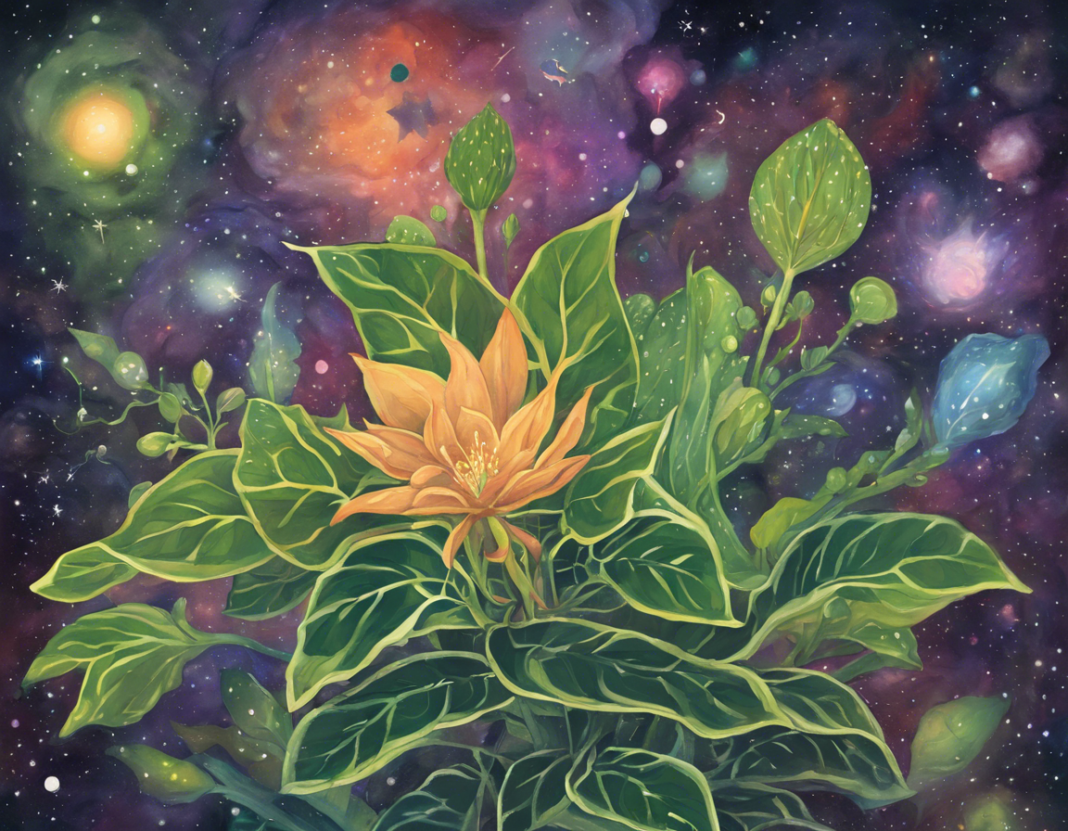Have you ever stopped to think about the incredible diversity of plant species that cover our planet? From towering trees in lush rainforests to delicate wildflowers in meadows, the world of plants is a vast and fascinating realm just waiting to be explored. But have you ever considered that each individual plant, from the smallest blade of grass to the largest sequoia, is part of a complex and interconnected system that scientists refer to as a “plant galaxy”?
Exploring the Plant Galaxy
The concept of a plant galaxy is based on the idea that all plant species are interconnected and reliant on each other in a complex web of relationships. Just like in outer space, where stars and planets are connected by gravitational forces, plants on Earth are linked through various ecological, evolutionary, and biological interactions.
Biodiversity Hotspots: The Orion Arm of the Plant Galaxy
One of the most vibrant regions of the plant galaxy is the biodiversity hotspots. These areas, scattered around the globe, are home to an exceptionally high number of plant species, many of which are found nowhere else on Earth. From the Amazon rainforest to the Cape Floristic Region in South Africa, these hotspots are like the bustling metropolises of the plant galaxy, teeming with life and diversity.
Tree Canopies: The Green Nebulae of the Plant Galaxy
In the vast expanse of the plant galaxy, tree canopies stand out as the green nebulae – vibrant, lush, and full of life. The canopy of a tree is home to a multitude of plant species, from epiphytes like orchids and ferns to birds, insects, and mammals that rely on this unique ecosystem for food and shelter. Exploring the tree canopy is like discovering a hidden world within the plant galaxy, where every leaf, flower, and branch plays a crucial role in the interconnected web of life.
Mycorrhizal Networks: The Communication Superhighways of the Plant Galaxy
Beneath the soil, a vast network of mycorrhizal fungi connects the roots of plants in a complex underground communication system. These fungal networks act as the superhighways of the plant galaxy, allowing plants to exchange nutrients, water, and chemical signals with each other. Through these mycorrhizal connections, plants can support and nurture their neighbors, forming symbiotic relationships that benefit the entire ecosystem.
Plant Galaxies and Human Impact
Unfortunately, the delicate balance of the plant galaxy is under threat due to human activities such as deforestation, pollution, and climate change. As we continue to alter the landscape and disrupt natural ecosystems, we risk unraveling the intricate tapestry of plant life that sustains our planet.
Conservation Efforts: Protecting the Plant Galaxy
In response to the growing threats facing the plant galaxy, conservationists and researchers around the world are working tirelessly to protect and preserve plant species and their habitats. From establishing protected areas and wildlife reserves to conducting research on rare and endangered plants, these efforts are crucial for ensuring the long-term health and viability of the plant galaxy.
Sustainable Practices: Nurturing the Plant Galaxy
As stewards of the plant galaxy, we have a responsibility to adopt sustainable practices that minimize our impact on the environment and promote the health and diversity of plant life. By supporting organic farming, reducing our carbon footprint, and planting native species in our gardens and green spaces, we can help nurture the plant galaxy and ensure a brighter future for all its inhabitants.
Frequently Asked Questions (FAQs)
- What is the significance of biodiversity hotspots in the plant galaxy?
-
Biodiversity hotspots are regions with high concentrations of plant species, making them crucial for conservation efforts and preserving global plant diversity.
-
How do mycorrhizal networks benefit plants in the plant galaxy?
-
Mycorrhizal fungi help plants exchange nutrients and communicate with each other, enhancing their growth and resilience in diverse ecosystems.
-
What are some examples of tree canopies as green nebulae in the plant galaxy?
-
The canopy of the Amazon rainforest and the African savannas are prime examples of vibrant tree canopies teeming with plant and animal life.
-
What are the main threats to the plant galaxy from human activities?
-
Deforestation, pollution, habitat destruction, and climate change are some of the key threats that endanger the health and balance of the plant galaxy.
-
How can individuals contribute to protecting the plant galaxy in their daily lives?
- By reducing waste, supporting sustainable agriculture, planting native species, and advocating for conservation efforts, individuals can play a vital role in preserving the plant galaxy.
Explore the wonders of the plant galaxy and discover the beauty and complexity of plant life on Earth. By understanding and appreciating the interconnectedness of all plant species, we can work together to safeguard this invaluable ecosystem for future generations to enjoy.




